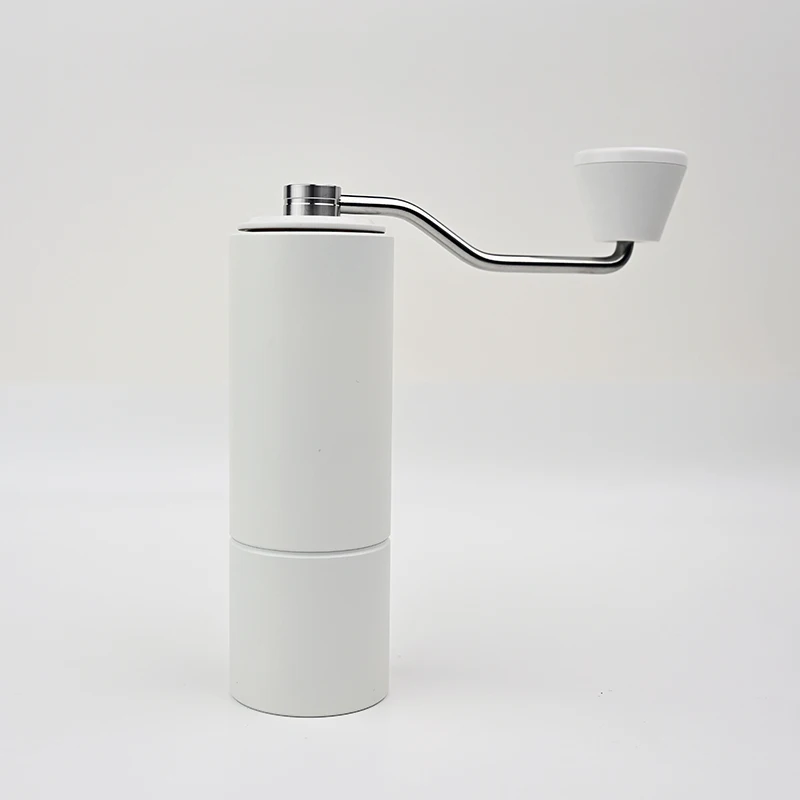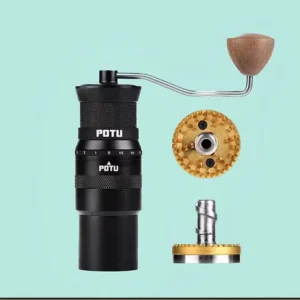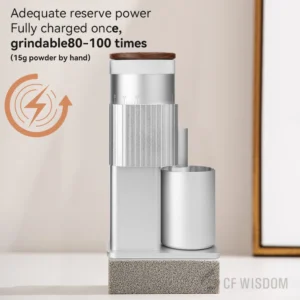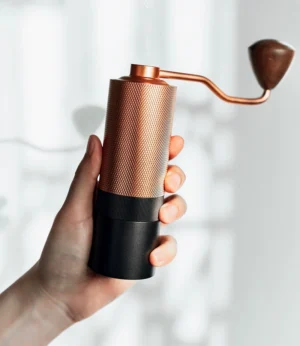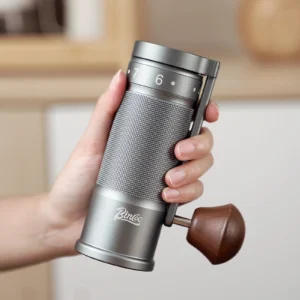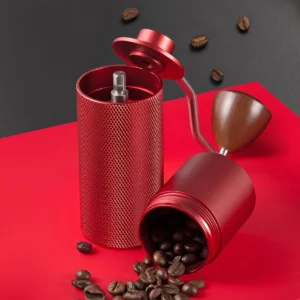Why Espresso Grind Consistency Is the Foundation of Great Coffee
When it comes to brewing exceptional espresso, grind consistency isn’t just important—it’s fundamental. Unlike other brewing methods that are more forgiving, espresso extraction happens under intense pressure in a matter of seconds, magnifying even small inconsistencies in your grind.
Consistent grinding means achieving uniform particle size throughout your coffee grounds. When water is forced through these grounds under 9 bars of pressure, it extracts compounds from each particle. With consistent particles, water flows evenly, extracting flavors uniformly. When particles vary in size, smaller particles over-extract (creating bitterness) while larger ones under-extract (creating sourness), resulting in an unbalanced shot.
Consider these critical impacts of grind consistency:
- Extraction rates typically vary by 15-25% between consistent and inconsistent grinds
- Even a 5% improvement in grind consistency can noticeably enhance flavor clarity
- Professional baristas often spend years mastering grind consistency as their primary focus
The physics is straightforward: water follows the path of least resistance. With inconsistent grounds, water channels through larger gaps, bypassing denser areas and creating uneven extraction. Precision in espresso grind settings remains the single most important variable you can control to achieve repeatable, delicious results.
What Exactly Makes a “Consistent” Espresso Grind
A truly consistent espresso grind has specific characteristics that you can identify both visually and tactilely. An ideal espresso grind should:
- Appear uniform to the naked eye, resembling fine granulated sugar or table salt
- Feel like a cohesive powder when rubbed between fingers, without noticeable gritty pieces
- Pour smoothly without clumping excessively when dispensed from the grinder
- Form a level surface when distributed in the portafilter
The technical term for what we’re seeking is narrow particle size distribution. This means most particles fall within a tight size range, with minimal outliers. The two most problematic outliers are:
- “Fines” – microscopic dust-like particles that can clog filter baskets and cause over-extraction
- “Boulders” – larger particles that extract too little and create channels for water to rush through
You can perform a simple “pinch test” to evaluate your grind: take a small amount between your fingers and press gently. A consistent grind will compress evenly and hold together slightly without feeling chunky or dusty. Understanding the ultimate espresso grind size chart helps provide visual references for what perfect consistency looks like at different grind settings.
The Role of Your Grinder in Achieving Consistency
Your grinder is the single most important tool for achieving consistent espresso grounds. The fundamental choice between burr and blade grinders is particularly crucial:
Burr grinders crush beans between two surfaces (burrs) set at a specific distance apart, producing uniformly sized particles. The beans have nowhere to go until they’re small enough to pass through the gap between burrs, ensuring consistency. Blade grinders, conversely, randomly chop beans with spinning blades, creating wildly inconsistent particles—making them unsuitable for espresso.
Within burr grinders, two main designs dominate:
- Flat burrs: Two parallel rings grind beans horizontally, typically producing very consistent particle sizes with fewer fines, ideal for lighter roasts and clarity
- Conical burrs: A cone shape inside a ring creates a vertical grinding path, often generating slightly more fines, which can enhance body in darker roasts
Beyond design, build quality significantly impacts consistency. Key factors include:
- Burr material and precision manufacturing
- Motor power and stability under load
- Frame rigidity to maintain perfect burr alignment
- Heat management during grinding
Entry-level burr grinders might produce grounds with 30-40% particle size variance, while prosumer models can achieve 15-25% variance. This difference dramatically affects extraction quality and shot repeatability. Our manual coffee burr grinders collection features options specifically designed to maximize consistency for espresso brewing.
Choosing the Right Burr Type for Maximum Consistency
The material and design of your grinder’s burrs directly influence grind consistency. The two primary material choices each offer distinct advantages:
Stainless Steel Burrs:
– Produce slightly sharper particle edges for cleaner flavors
– Generally stay sharper longer before dulling
– Conduct heat more readily (which can affect beans during grinding)
– Typically found in higher-end espresso-focused grinders
Ceramic Burrs:
– Create slightly more fines, potentially adding body to shots
– Resist heat better than steel, reducing thermal impact on beans
– Often last longer before needing replacement
– Common in mid-range and manual grinders
Burr size matters significantly too. Larger burrs (typically 50-98mm in specialized espresso grinders) offer several advantages:
– More cutting surface area for better consistency
– Can grind at lower RPMs, generating less heat
– Process beans more quickly with less grinding time
Common misconceptions suggest ceramic burrs always produce more consistent grounds, but modern testing shows that manufacturing precision matters more than material. The impact of burr shape on espresso consistency can be more significant than material, with specially designed burr geometry reducing clumping and improving particle distribution.
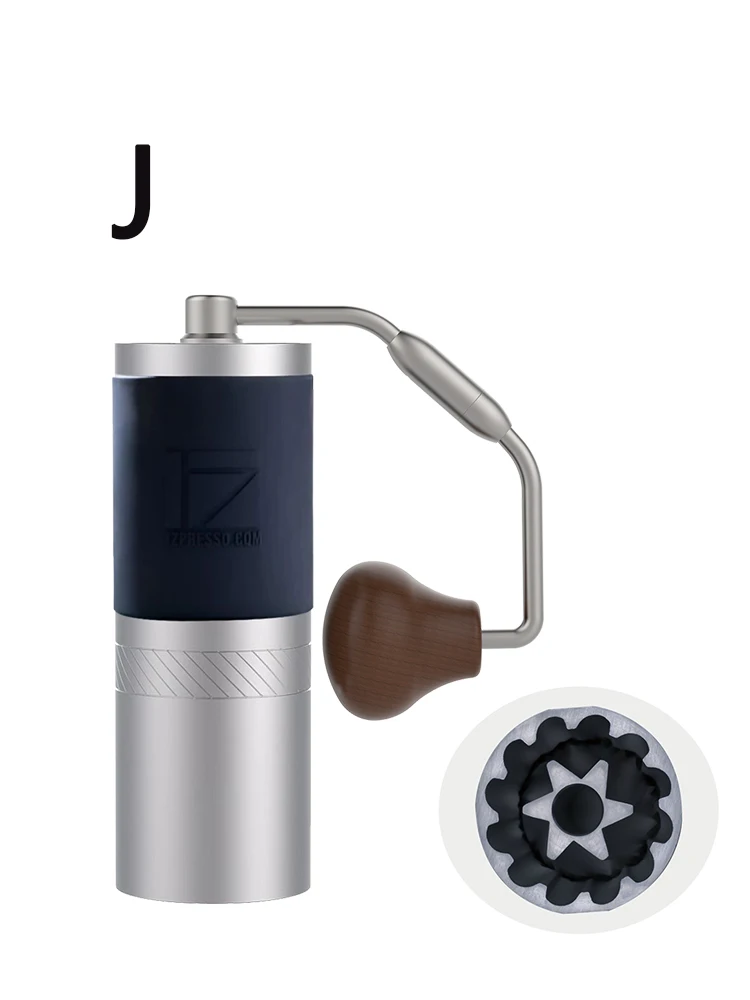
Mastering Your Grinder Settings for Consistency
Achieving consistent results requires methodical adjustment of your grinder. Follow these steps for optimal results:
- Start with a baseline setting that’s close to espresso range for your specific grinder
- Make tiny adjustments – move in small increments (most quality grinders offer micro-adjustments)
- Allow the grinder to “settle in” by grinding 5-10 grams of coffee after each adjustment
- Pull a test shot using consistent parameters (18g in, 36g out is a standard 1:2 ratio)
- Time the extraction – aim for 25-30 seconds for most espresso blends
- Taste and evaluate – adjust finer if sour/weak, coarser if bitter/harsh
- Document your settings once you find the sweet spot
When dialing in, remember that environmental factors like humidity and bean age require occasional readjustments. The ideal approach is to change only one variable at a time, allowing you to understand exactly how each adjustment affects your extraction.
Many espresso enthusiasts maintain a coffee journal tracking:
– Grinder setting number/position
– Dose weight (in grams)
– Yield weight (in grams)
– Extraction time
– Taste notes
This methodical approach helps build intuition for adjusting your grind for perfect espresso and enables you to quickly dial in similar coffees in the future.
Managing Coffee Beans for Better Grinding Results
Even the finest grinder cannot compensate for poorly managed coffee beans. Bean freshness dramatically impacts grind consistency and extraction quality:
- Use beans between 7-21 days after roast date for optimal grinding behavior
- Extremely fresh beans (1-6 days) contain excess CO2 that can cause inconsistent extraction
- Beans older than 4-5 weeks typically produce more fines when ground and extract unevenly
Roast level significantly affects grinding characteristics:
– Light roasts are denser and harder, requiring more force to grind consistently
– Medium roasts often produce the most consistent particle size distribution
– Dark roasts are more brittle and fragile, creating more fines during grinding
Bean origin and processing method also influence grinding behavior. For example, naturally processed coffees typically have slightly different density than washed coffees, sometimes requiring minor grind adjustments.
For optimal storage to maintain consistent grinding properties:
– Keep beans in airtight containers away from light
– Store at room temperature (avoid refrigeration which causes condensation)
– Only grind what you need immediately before brewing
Our manual espresso grinder selection is specifically designed to handle beans of varying density and freshness while maintaining consistency.
Single-Dosing vs. Hopper Grinding: Impact on Consistency
Two primary approaches to feeding beans into your grinder can significantly affect consistency:
Hopper Grinding:
In this traditional method, a hopper full of beans sits atop the grinder, with bean weight creating downward pressure that helps maintain consistent feeding into the burrs. This approach typically produces more consistent results in many grinders because the pressure remains relatively stable during grinding.
Single-Dosing:
This approach involves measuring each individual dose of beans before grinding, with the hopper empty or nearly empty. While offering precision in dose weight, single-dosing can reduce grind consistency in grinders designed for hopper use because the lack of bean weight above changes how beans enter the burrs.
To improve consistency when single-dosing:
– Use the Ross Droplet Technique (RDT) – adding a tiny drop of water to beans before grinding to reduce static
– Install aftermarket “weights” that simulate bean pressure in some grinders
– Consider grinders specifically designed for single-dosing, which have optimized bean paths
The ideal approach depends on your brewing habits. Hopper grinding works well for high-volume settings or when making multiple shots. Single-dosing excels for home users who switch beans frequently or want to minimize waste. Our precision manual grinder options work exceptionally well for single-dosing, as they’re designed for this specific workflow.
Essential Grinder Maintenance for Consistent Results
Even the finest grinder will produce inconsistent results without proper maintenance. Follow this schedule to maintain optimal performance:
Daily Maintenance:
– Brush out the grinding chamber after each session
– Tap the grinder to dislodge retained grounds
– Clean the dosing area and portafilter holder
Weekly Maintenance:
1. Remove and clean the hopper
2. Brush accessible burr surfaces thoroughly
3. Use a vacuum to remove coffee dust from chamber
4. Wipe down external surfaces
Monthly Deep Clean:
1. Disassemble according to manufacturer instructions
2. Thoroughly brush all burr surfaces
3. Use grinder cleaning tablets or uncooked rice to remove oils
4. Ensure perfect reassembly and alignment
Annual Inspection:
– Check burrs for wear (typically noticeable after 500-1000lbs of coffee)
– Inspect for burr alignment issues
– Replace burrs if edges appear dull or chipped
Signs that your burrs may need replacement include:
– Increasingly inconsistent grind size despite cleaning
– Inability to grind fine enough for proper extraction
– Unusual noise during grinding
– Excessive heat generation
Retention (old grounds trapped in the grinder) significantly impacts consistency. Minimize this by:
– Using single-dosing techniques
– Performing regular cleaning
– Considering low-retention grinder designs
Understanding whether coffee grinders need maintenance is essential for anyone serious about espresso quality and consistency.
Troubleshooting Common Grind Consistency Problems
Recognizing and resolving grind consistency issues will dramatically improve your espresso quality:
Problem: Excessive Clumping
– Appearance: Grounds form large clumps when dispensed
– Causes: Static buildup, high humidity, oily beans, or burr issues
– Solutions:
– Use the Ross Droplet Technique (tiny drop of water on beans)
– Clean burrs to remove oil buildup
– Consider a grinder with anti-static features
Problem: Bimodal Distribution
– Appearance: Mix of very fine and coarse particles with few medium-sized particles
– Causes: Worn burrs, misaligned burrs, or poor grinder design
– Solutions:
– Check and correct burr alignment
– Replace worn burrs
– Upgrade to a grinder with better particle distribution
Problem: Inconsistent Shot Times
– Appearance: Identical dose and grind setting produces varying extraction times
– Causes: Retention, inconsistent distribution, or temperature fluctuation
– Solutions:
– Purge 2-3g before each shot to clear old grounds
– Use consistent distribution technique
– Allow grinder to reach thermal equilibrium
Problem: Static Cling
– Appearance: Grounds stick to surfaces and fly everywhere
– Causes: Low humidity, friction during grinding
– Solutions:
– Increase ambient humidity if possible
– Use RDT method
– Ground into a dosing cup with lid
Addressing these common issues follows the same principles used when troubleshooting espresso grind issues in professional settings, helping you achieve cafe-quality consistency at home.

Puck Preparation Techniques to Complement Your Grind
Even perfect grind consistency can be undermined by poor puck preparation. These techniques work harmoniously with a consistent grind:
WDT (Weiss Distribution Technique)
This method uses a thin needle or tool to stir and break up clumps in the ground coffee, creating even density throughout the puck. Proper WDT significantly reduces channeling and improves extraction uniformity by:
– Breaking apart clumps that cause water to flow around them
– Distributing grounds evenly throughout the basket
– Eliminating air pockets that lead to uneven extraction
Dosing Tools
Precision dosing cups and funnels minimize mess and reduce coffee loss while:
– Transferring grounds without disrupting distribution
– Enabling easy WDT without spillage
– Facilitating consistent dosing amounts
Distribution and Tamping
After WDT, proper distribution and tamping create the final conditions for even extraction:
– Use a distribution tool to level the puck surface
– Apply firm, consistent tamping pressure (about 30 pounds)
– Ensure the tamp is perfectly level to prevent channeling
These techniques are particularly important because they address different aspects of consistency than grinding alone. The right espresso grind settings for perfect shots must be complemented by proper puck preparation to achieve truly exceptional results.
Can Manual Grinders Deliver Consistent Espresso Grinds?
Yes, high-quality manual grinders can absolutely produce consistent espresso grounds, though not all manual grinders are created equal. The key factors that separate espresso-capable manual grinders from basic models include:
- Bearing Quality: Premium manual grinders use dual bearings to stabilize the shaft, dramatically reducing wobble that causes inconsistent particle size
- Burr Design: Specialized espresso burrs with appropriate geometry for fine grinding
- Adjustment Mechanism: Stepless or micro-stepped adjustment for precise control
- Build Stability: Solid construction that doesn’t flex during grinding
Premium manual grinders often outperform entry-level electric grinders for espresso, offering several unique advantages:
– Zero retention issues, meaning no old grounds mixing with fresh ones
– No heat generation that can affect coffee flavor
– Exceptional value for the grind quality delivered
– Portability for travel or camping
The grinding technique matters significantly with manual grinders:
– Use smooth, consistent turning motion rather than erratic speed
– Keep the grinder vertical and stable during operation
– Expect longer grinding times for espresso (1-3 minutes for a dose)
Flat burr hand grinders often provide exceptional consistency specifically for espresso, rivaling electric grinders costing several times more.
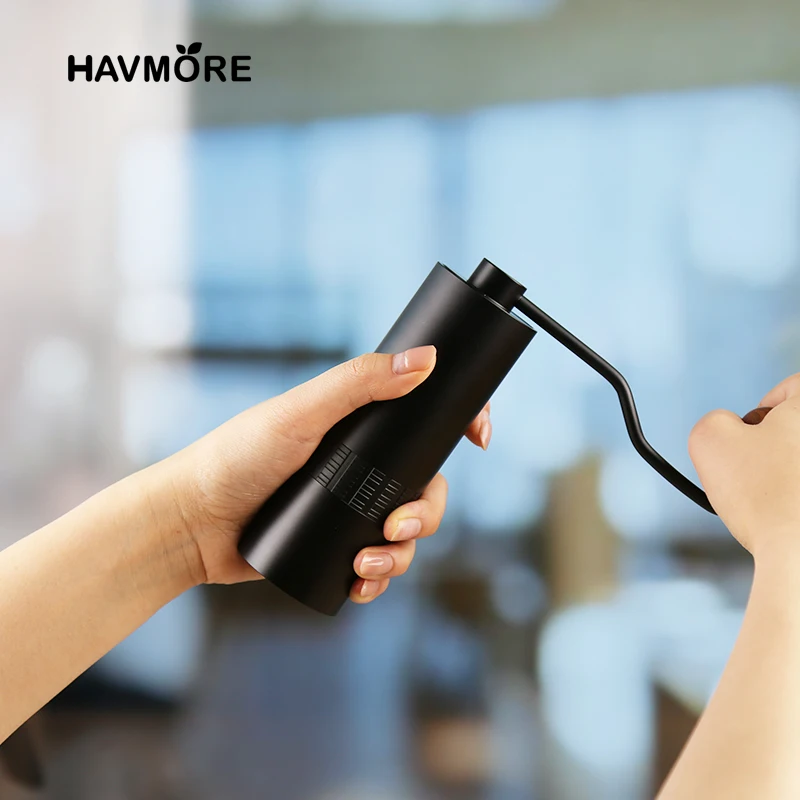
Fine Adjustment Hand Grinder, Precision Manual Grinder, Travel Coffee Grinder
Price range: $185.11 through $494.63 Select options This product has multiple variants. The options may be chosen on the product pageHand Burr Grinder, Hand Crank Coffee Grinder, Manual Espresso Grinder, Portable Coffee Grinder
Price range: $262.72 through $300.22 Select options This product has multiple variants. The options may be chosen on the product pageManual Burr Mill, Manual Coffee Grinder Stainless Steel, Manual Coffee Mill Grinder, Mechanical Coffee Grinder
Price range: $127.26 through $130.32 Select options This product has multiple variants. The options may be chosen on the product pageHand Burr Grinder, Manual Coffee Grinder Stainless Steel, Precision Manual Grinder
Price range: $183.64 through $187.52 Select options This product has multiple variants. The options may be chosen on the product page
Does Water Temperature Affect the Importance of Grind Consistency?
Water temperature and grind consistency interact in significant ways during espresso extraction. While consistency always matters, temperature can either magnify or partially compensate for grind issues:
At higher temperatures (200-205°F/93-96°C), water extracts compounds more aggressively. This makes grind consistency even more critical, as inconsistent grounds will show more pronounced differences in extraction rates. Channeling becomes more severe, and the taste differences between over and under-extracted areas become more noticeable.
At lower temperatures (190-195°F/88-90°C), extraction slows somewhat, potentially reducing the negative impact of minor grind inconsistencies. However, this comes at the cost of potentially less complete extraction overall.
Optimal temperature ranges for different roast levels:
– Light roasts: 200-205°F (93-96°C) to extract dense bean structure
– Medium roasts: 195-200°F (90-93°C) for balanced extraction
– Dark roasts: 190-195°F (88-90°C) to prevent over-extraction
Recent research from coffee scientists shows that temperature stability throughout the extraction is as important as the specific temperature itself. Temperature fluctuations can exaggerate the negative effects of inconsistent grinding, creating unpredictable results.
What’s the Relationship Between Dose and Grind Consistency?
Dose (the amount of coffee used) and grind consistency share a complex relationship that affects your espresso extraction:
- A larger dose creates a deeper coffee bed, increasing resistance to water flow
- A smaller dose reduces resistance, requiring finer grinding to maintain proper extraction time
When you change your dose, you must adjust your grind to maintain balanced extraction:
– Increasing dose by 1g typically requires grinding slightly coarser
– Decreasing dose by 1g typically requires grinding slightly finer
Standard dosing ranges for common basket sizes:
– Traditional baskets: 14-16g
– Standard double baskets: 17-19g
– Competition/precision baskets: 18-22g
– Triple baskets: 20-25g
Consistency in your dosing is just as important as grind consistency. Even a 0.5g variation can noticeably impact extraction pressure and flow rate. Using a precise scale (measuring to 0.1g) helps maintain repeatable results.
Many enthusiasts find that certain all-metal hand grinders provide exceptional dose consistency due to low retention, helping eliminate one variable from the complex espresso equation.
How Different Brewing Methods Demand Different Consistency Standards
While grind consistency benefits all brewing methods, espresso’s unique extraction environment makes it exceptionally demanding:
| Brewing Method | Consistency Importance | Pressure | Contact Time | Particle Size |
|---|---|---|---|---|
| Espresso | Critical | 9 bar | 25-30 sec | Very fine |
| Moka Pot | Very important | 1-2 bar | 1-2 min | Fine |
| Pour Over | Important | Gravity | 2-4 min | Medium |
| French Press | Moderate | None | 4+ min | Coarse |
Espresso’s high-pressure environment magnifies the effects of inconsistency because:
– Water naturally seeks the path of least resistance
– Under pressure, this path-finding becomes more aggressive
– The short extraction time leaves no opportunity to correct imbalances
– The concentrated nature makes flaws more noticeable
When selecting a grinder for multiple brewing methods, espresso requirements should dictate your minimum quality threshold. A grinder that produces consistent espresso grounds will generally perform well for all other methods, while the reverse is often not true.
Understanding the fundamental differences between espresso grind and drip grind requirements helps explain why consistent grinding matters more as you move toward pressure-based extraction methods.

